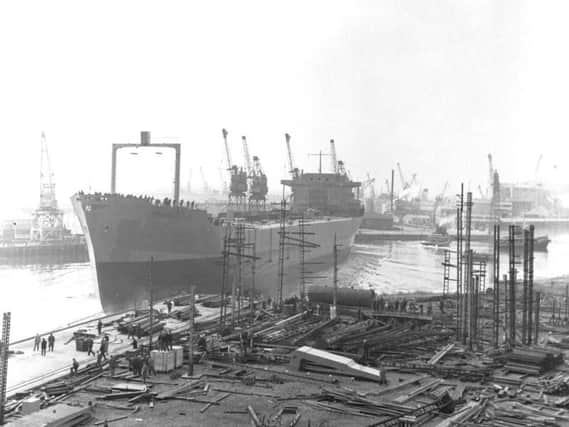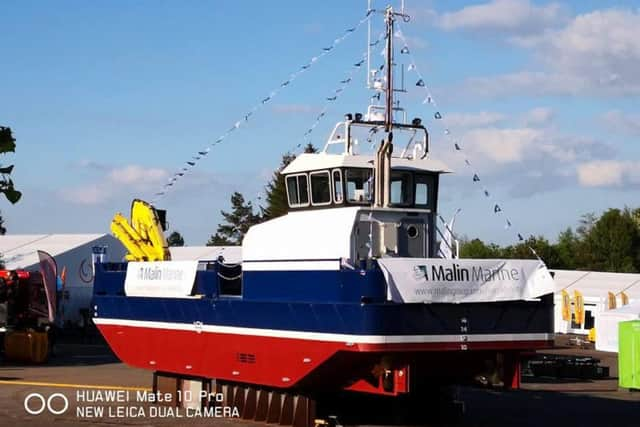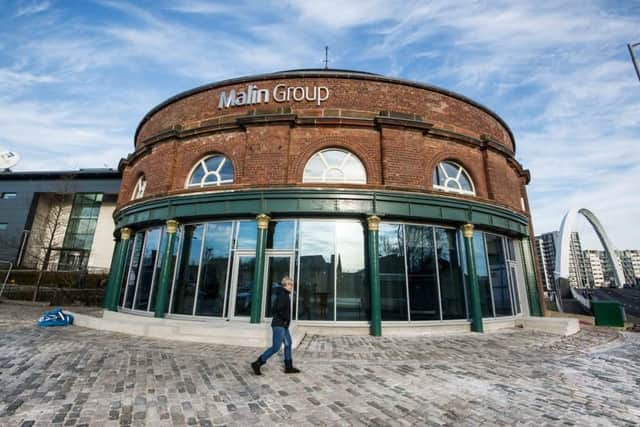Workboat launch signals new era of commercial shipbuilding on River Clyde


Malin Group put its first vessel onto the water at its fabrication yard last week with the workboat heading onto the Clyde for sea trials later this month.
The workboat, which has been designed and built by the engineering firm over the past nine months, is the first vessel to be launched at Renfrew since 1992, it is understood.
It comes as the company invests in the future of commercial shipbuilding on the Clyde with the Scottish Maritime Technology Park, which will be created on a brownfield site near the Erksine Bridge over the next four to five years.
Graham Tait, managing director of Malin Marine Consultants, said the reputation of The Clyde as a centre for shipbuilding excellence remained unsurpassed.
Over one fifth of the world’s supply of ships from the end of the 19th Century until the First World War were built on The Clyde.
He said: “Everyone knows the history of the Clyde shipbuilding and we tell people out workboat was built on The Clyde, there is always a reaction, a raised eyebrow, given its reputation.


“Shipbuilding on The Clyde may be at a fraction of its former output but there is still a thriving maritime industry on the river. That is something we will be building on in the future.”
The 1655 Multipurpose Workboat has been created with a number of sectors in mind, such as aquaculture and marine civil engineering projects, including the building and repair of jetties and ports.
The boat can operated in shallow water and can be transported by road, if required, with the design to be adapted to the needs of individual clients.
Mr Tait said: “It really is a workhorse, a Swiss Army knife-type vessel which can be adapted to suit a number of industries.”


The boat was put to water at the firm’s fabrication yard on the River Cart. It’s thought to be the first time a vessel has been launched on the Clyde tributary.
Mr Tait said: “This was a big, important moment for us. This boat is the first of class - the first of everything. A lot of people were holding their breath.”
The Malin Group will take the boat onto The Clyde later this month for a formal launch, with the Bascule Bridge at Inchinnan to be opened up as the vessel makes the 15 minute journey into the city.
The Clyde remains central to the vision of Malin Group, a company with is roots in Aberdeen and a long work record of supporting the North Sea oil and gas industry with its engineering expertise.
Clydeside is now better suited to the company’s shipbuilding aspirations than the North East of Scotland, Mr Tait said.
He added: “The Clyde is attractive on many levels. There are more resources around the central belt and the transportation is good.”
The company recently completed a major renewables project at its Renfrew yard, with the launch of a buoy that will suuport first commercial Deep Green tidal current generator fitted at Holyhead Deep off the coast of Wales.
The buoy’s fitout was completed at the King George V dock on the Clyde.
Malin Group recently moved its head office into the renovated South Rotunda, one of the few original Clydeside buildings left in the city.
Both the North and South Rotundas were built between 1890 and 1896 to cover lift shafts to tunnels under the River Clyde which were originally used by pedestrians and horse-drawn vehicles.
“It seems quite fitting that we are now based at this iconic site of Clyde’s industrial heritage,” Mr Tait added.
Malin Group will now create the Scottish Maritime Technology Park on the Carless estate, the former site of an oil refinery, to the south-west of Old Kilpatrick in West Dunbartonshire.
Mr Tait said research, skills, design and manufacturing will be brought together at the centre which will have direct access to a deepwater channel on the Clyde.
He added: “We are looking to the future to ensure the long term success of the Clyde as a maritime centre of excellence.”
